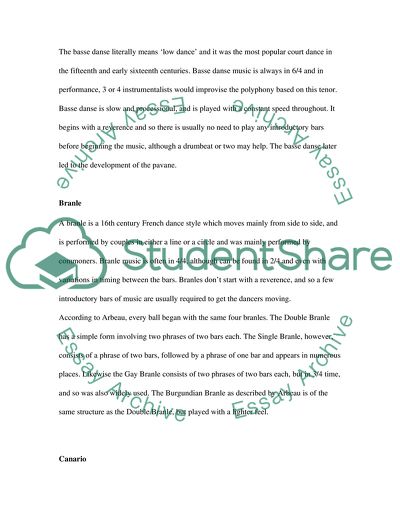Dances of the renaissance Essay Example | Topics and Well Written Essays - 500 words. Retrieved from https://studentshare.org/miscellaneous/1543650-dances-of-the-renaissance
Dances of the Renaissance Essay Example | Topics and Well Written Essays - 500 Words. https://studentshare.org/miscellaneous/1543650-dances-of-the-renaissance.


